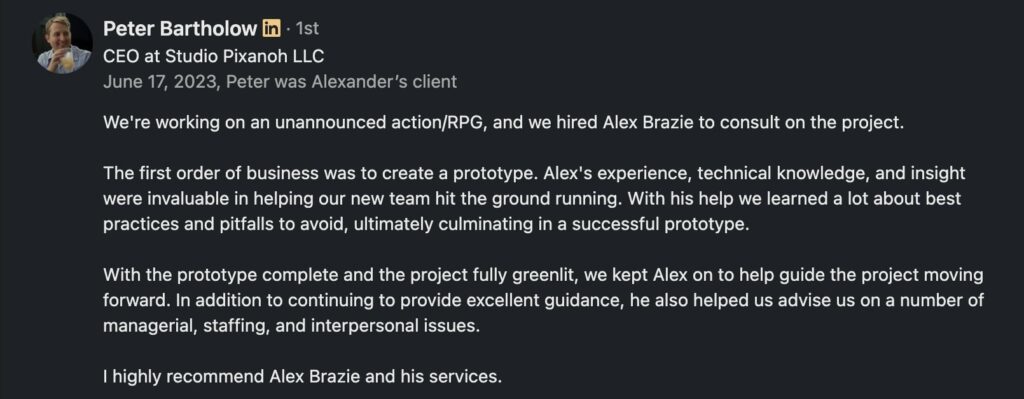Your game design resume is the often gateway to your portfolio. Meaning that’s the first thing recruiters and hiring managers evaluate before they consider looking at your portfolio.
In addition to optimizing your resume, I recommend you to check out rest of the series so you can improve your chances of passing the talent filters of the game studios’ hiring process:
- How to Apply and Increase Your Odds (Part 1)
- Game Design Cover Letter (Part 2)
- Game Design Resume (Part 3) – this post
- Game Design Portfolio (Part 4)
- Game Design Tests (Part 5)
- Game Design Job Interview Guide (Part 6)
- Game Design Job Interview Questions (Part 7)
By the way, as you read this post, feel free to join #career-guidance channel in Funsmith Club Discord where you can seek advice from game devs of all levels including me on
- Breaking into the industry
- Your resume/CV, Portfolio, design skill test, interviews, negotiations
- Navigating your current career path
You can also get notified each week on the latest game design job listings and actionable tips here 👇
So let’s go over how you can optimize your resume to what the studios are actually looking for.
Prepare and Optimize Your Game Design Resume
The main goal of your game design resume is to capture enough interest so your portfolio gets reviewed.
While you will want to tailor your resume to each studio and each position you are applying to, building a template will give you an easy starting point.
Stick with the following fundamental elements, and your resume should perform well:
1. Contact information is usually up top, and can include links to your LinkedIn and portfolio site as well as your email and phone number.
Make sure you emphasize your portfolio and make sure it’s a clickable hyperlinked text that directs viewers to your portfolio with a single click.
Again, this is the whole point of your resume or CV.
2. Keywords and skills. These days a large studio typically starts by having a ATS machine or a hiring manager quickly review resumes for relevant skills. Typically, this section is a bullet point list for ease of reading.
Update this section for each position you apply to based on the skills the game studio is looking for. These skills can include general game design tasks (like PvP balancing or level design), as well as familiarity with specific software or programming languages.
Don’t lie here, as you’ll get found out quickly and burn some bridges along the way.
3. Work experience. If you haven’t worked in games yet, you can still include positions where you had significant responsibilities.
This section can also include personal projects that you did on your own time, whether that’s game design work or something else you’re proud of that shows relevant skills.
Bonus tip: Under each of experience sections, embed clickable links in your text to lead straight to your respective portfolio pages or Steam/Itch pages that is relevant to the specific set of experience, so it’s very easy to access proof of your experience.
You should generally list your work experience in chronological order, with the most recent jobs first. That said, if you have a wide variety of jobs, it’s okay to put your most relevant, game-related work first.
Your resume is a snapshot of your professional experience, but also a great place to make yourself stand out from the get-go. If you hosted events or have experience as an actor or musician, mention it.
They might not be the most relevant points, but they help paint you as a real person.
4. Education is fine to include but don’t make it a large focus. Schooling can give a better idea of your skillset and helps show that you are driven, but it isn’t a requirement for being a good designer.
5. Keep your resume onto a single page. The hiring side has to review resumes at scale, which means you want to make it as easy for them to digest the information on your resume as possible.
So there is no reason why you need more than one page to get the summarized information about your experience and background.
Wrapping Up
Have friends review your resume for typos and wording improvements.
Next part of the series, we’ll dive into how to build a game design portfolio that’ll get you hired.
If you want feedback on your game design resume template, feel free to share it in the Funsmith Club Discord.












3 Responses
Thank you ! New graduate … Looking a job in Game Design
You’re welcome! Hope the guide helps.
Thanks guys, just recently finished my MA and having come from an Architecture background, this is a massive help in understanding how the Resume needs to be formatted for Game Design roles. Thanks again 🙂